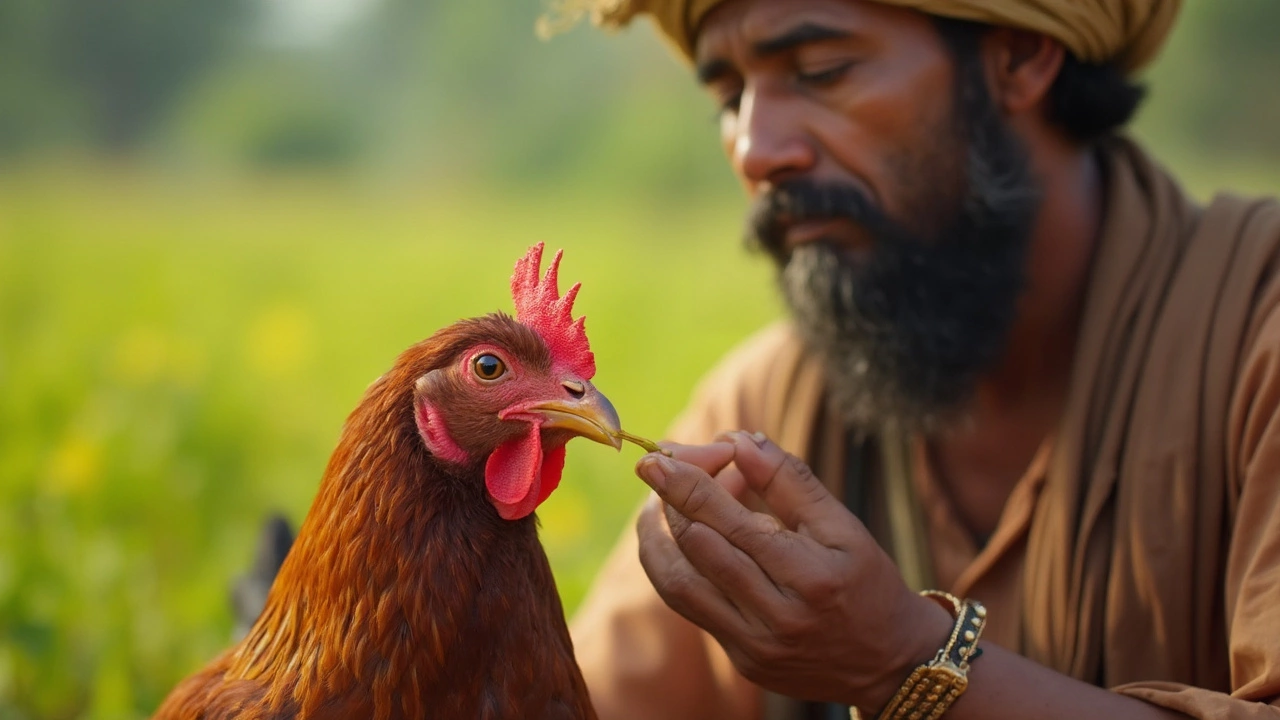canker in chickens: What Every Backyard Keeper Should Know
When dealing with canker in chickens, a viral skin disease that creates wart‑like growths on the comb, wattles and beak of poultry. Also called poultry canker, it spreads through direct contact, contaminated feeders and dust baths. As a type of poultry disease, it falls under the broader category of viral infections that affect flock productivity.
The virus behind canker belongs to the Avian pox family, which also causes dry‑type lesions on the skin and moist‑type lesions in the respiratory tract. Knowing that canker is essentially a form of avian pox helps you understand why vaccination, isolation and strict hygiene are all crucial. Early detection canker in chickens can mean the difference between a manageable outbreak and a devastating loss.
Key steps to manage canker in chickens
First, watch for tell‑tale symptoms: raised, ulcerated nodules on the comb, wattles, beak or even the legs. These lesions often turn black and may bleed. In severe cases, birds become lethargic, lose appetite and may develop secondary bacterial infections. A quick visual check each morning can spot the first signs before the disease spreads.
Second, confirm the diagnosis. While a vet can run a PCR test for the virus, many keepers rely on the classic lesion pattern combined with a recent history of exposure to infected birds or contaminated equipment. If you suspect canker, isolate the affected bird immediately to prevent direct contact transmission.
Third, treat the flock. There’s no cure that eradicates the virus, but supportive care helps. Apply a mild antiseptic spray to lesions, provide clean water, and boost nutrition with vitamin A and electrolytes. Some keepers use a live attenuated avian pox vaccine applied to the wing web, which can reduce severity if given early.
Fourth, enforce biosecurity. Disinfect feeders, waterers, and coop surfaces with a diluted bleach solution (1 part bleach to 32 parts water). Use footbaths at entry points and change them daily. Limit visitors during an outbreak and ensure that any new birds are quarantined for at least four weeks.
Fifth, plan for long‑term prevention. Regular vaccination programs for avian pox are the most reliable defense. Rotate bedding, keep the coop dry, and avoid overcrowding – all factors that lower stress and virus replication. Good ventilation and dry litter also curb the spread of dust‑borne viral particles.
Understanding canker’s impact on your kitchen is useful too. Infected birds may have compromised meat quality, and handling them without proper gloves can expose you to secondary bacterial infections. If you raise chickens for eggs or meat, always cook poultry to an internal temperature of 165 °F (74 °C) to kill any lingering pathogens.
Below you’ll find a collection of articles that cover related topics – from the nutrition of dal and the science of lemon curdling to safe handling of chicken in Indian recipes. Together they give a well‑rounded view of how poultry health ties into the foods you love to cook.
Ready to dive deeper? Keep scrolling to explore detailed guides, practical tips and tasty recipes that keep your flock healthy and your meals flavorful.

Yellow Bumps in Chicken’s Mouth: Causes, Treatment, and Prevention
Yellow stuff in your chicken's mouth can signal health issues like canker, fowl pox, or vitamin deficiencies. Learn to spot causes, treat, and prevent problems.